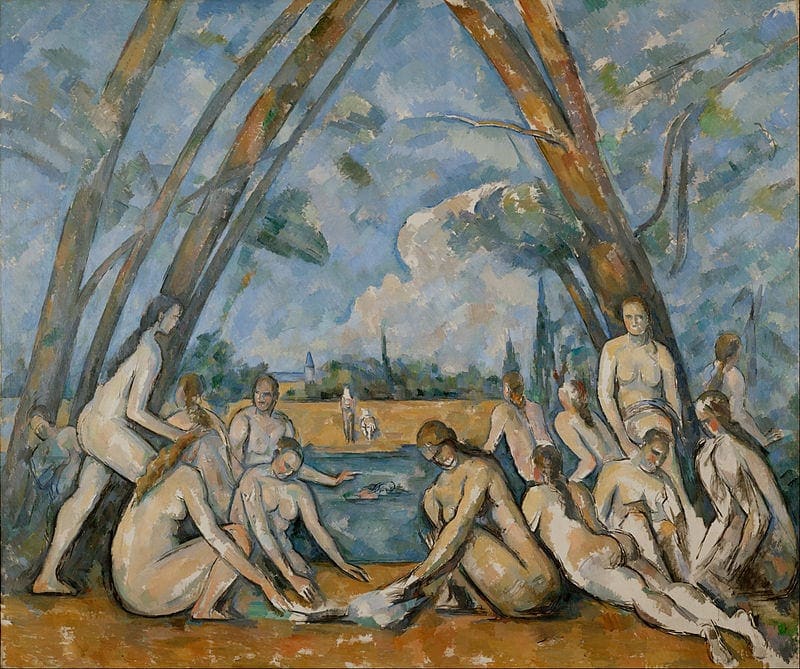Description
The Large Bathers
Painting type:
Oil painting
Size:
40cm x 50cm
Note:
Unframed painting!
Info:
Bathers is an oil painting by French artist Paul Cézanne that was first shown in 1906. The painting, on display at the Philadelphia Museum of Art, belongs to a series of Bath paintings by Cézanne; others are in the Museum of Modern Art in New York City, the National Gallery, London, the Barnes Foundation, Pennsylvania, and the Art Institute of Chicago. Sometimes referred to as Big Bathers or Large Bathers to distinguish it from small works, this painting is regarded as one of modern art, and is often regarded as one of Cézanne’s best works.
Cézanne worked on this project for seven years, and it did not end until her death in 1906. The painting was purchased in 1937 for $ 110,000 with a donation from the Philadelphia Museum of Art Fund by their chief aide, Joseph E. Merchant. It was previously owned by Leo Stein.
For each type of Baths, Cézanne moved away from the traditional painting scene, deliberately creating works that would not appeal to the novice viewer. He did this to avoid passing fashion and gave his work a timeless quality, and in doing so paved the way for future artists to ignore current trends and paint pieces that will appeal equally to all generations. The invisible naked females present in the Large Bathers provide a drawing of weight and size. It differs from his work in equal size, by accustomed to the naked forms in the triangular pattern of trees and rivers. Using the same technique used to paint beautiful and surviving landscapes, the Large Bathers recall the work of Titian and Peter Paul Rubens. Comparisons are often made with another popular group of nude women of the same age, Picasso’s Les Demoiselles d’Avignon.
The purchase of the painting, although generally recommended, was questioned by The Philadelphia Record, which reported that 41,000 residents (or 10 percent) of Philadelphia residents did not have bathtubs, and that money could not be better spent elsewhere. While Cézanne’s ability to paint has always been criticized, the critic once said that he “made the Battalion unpaid in the right way to take away the warmth of summer fun.” The painting is featured in the 1980’s BBC Two Two 100 Great Paintings series.





